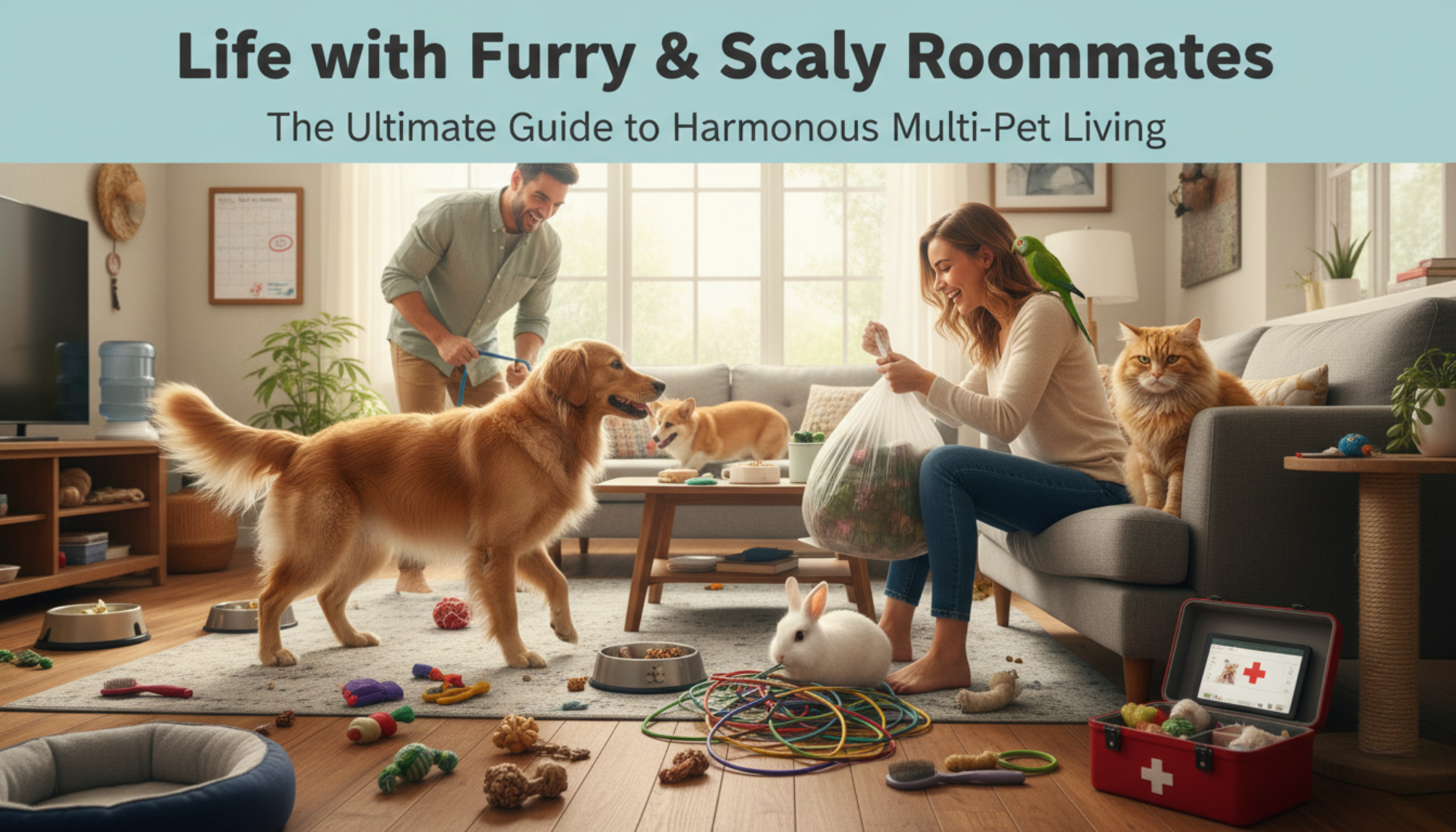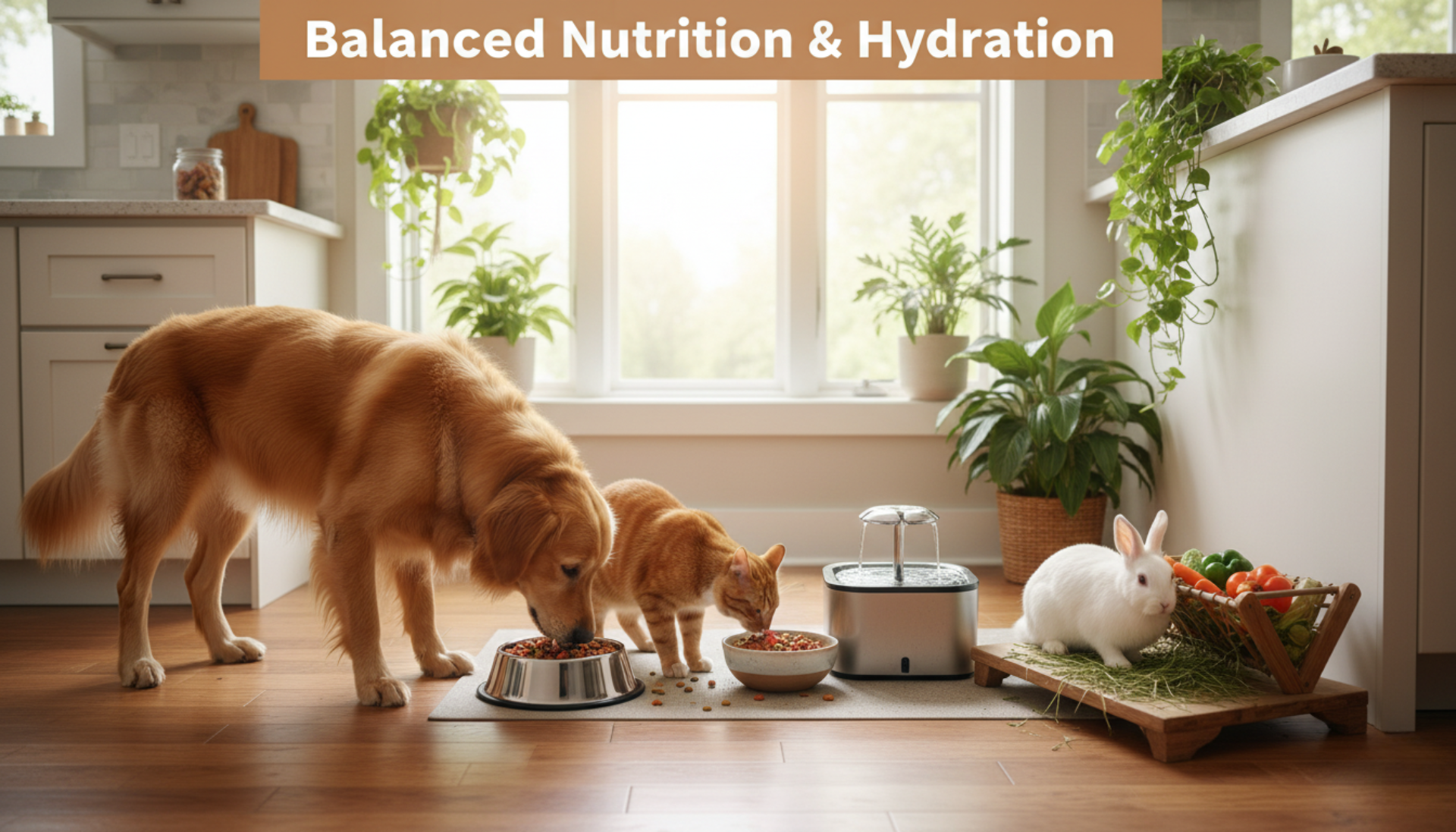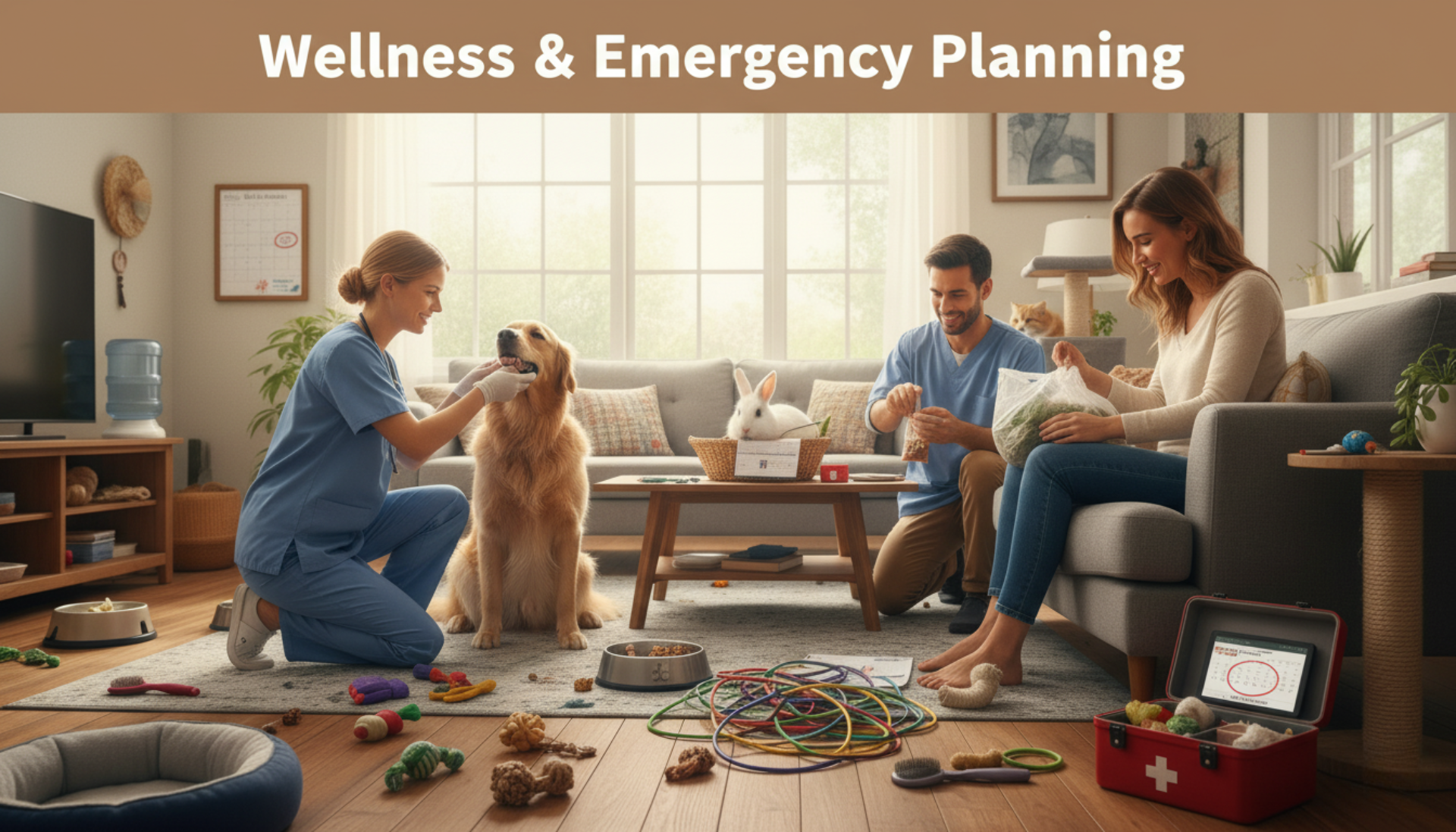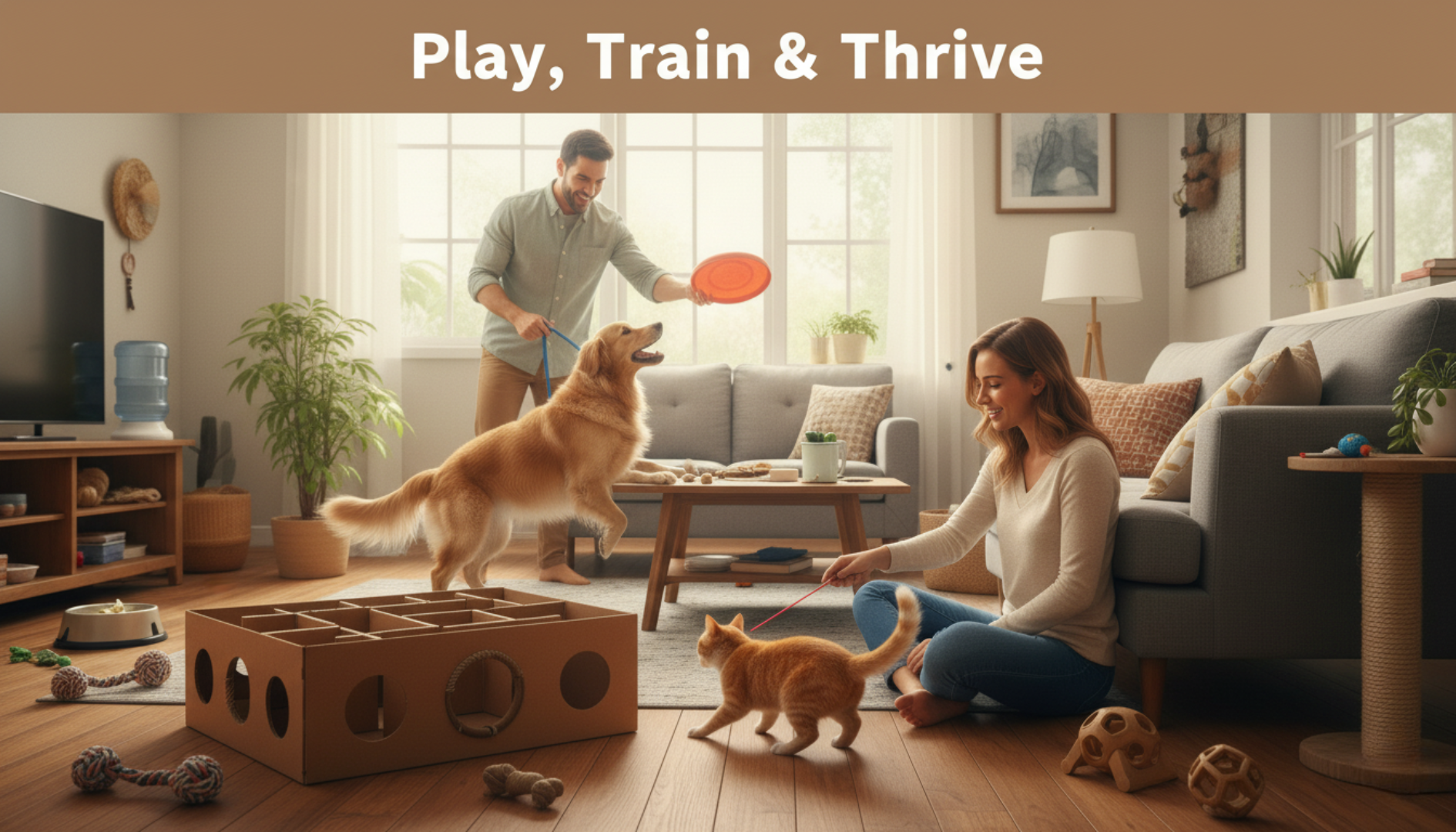Pet Care Advice is more than rules about real life with our furry, feathered, or even scaly friends. Every pet adds joy, mess, and moments that make you laugh out loud. My dog greets me like a hero for taking out the trash. My cat glares like she owns the lease. And my rabbit? He’s probably chewing through another cable as we speak.

Through years of living with pets, I’ve learned that caring for them isn’t about perfection; it’s about balance. They need food, play, and love in equal measure. They need us to stay patient and flexible and sometimes just laugh it off when things go sideways.
In this guide, I’ll share what really works:
-
Vet care and a must-have emergency kit.
-
Grooming hacks that save time and sanity.
-
Fun exercise ideas that protect your furniture.
-
Training tips that actually stick.
-
How to adjust for age, weather, and lifestyle.
-
Safety steps you should never skip.
-
Life lessons from managing multiple pets.
-
Travel tricks that reduce chaos.
-
Smart tech that helps me worry less.
-
And budget planning that keeps it all doable.
It’s not always easy, but it’s always worth it. Caring for pets is about learning, laughing, and loving every single day.
Pet Care Advice: Meals and Hydration
Balanced Nutrition
Feeding companions well starts with choosing the right meals for their species and age. I once thought leftovers were enough—after all, that’s how many people fed their dogs years ago. But research (and a grape-related scare with my own pup) convinced me otherwise. Grapes, onions, and chocolate are not just “bad”; they can be dangerous. Now, I buy high-quality kibble for my canine friend and mix wet and dry meals for my cat. Small pets like guinea pigs and rabbits get hay and vegetables. It’s all about balance.

Treats Without Guilt
Treats are powerful tools in training. I used to hand them out far too often, basically every time my dog blinked cutly. The result? Extra pounds and a vet’s raised eyebrow. These days, I measure snacks and keep them part of the daily intake.
Water Habits
Hydration sounds easy until you live with a cat. My dog drinks happily, but my cat treats water bowls like decorations. The solution? A fountain. The movement intrigued her, and she now drinks enough to keep her kidneys healthy. If you face the same issue, I shared my tricks here.
Health and Vet Visits
Routine Appointments
I schedule yearly checkups, sometimes more often, for seniors. Even when they appear fine, professionals can spot silent issues—like dental trouble or early arthritis. Vaccinations and parasite prevention are part of the schedule, too. I once skipped a flea treatment and paid the price: scratching, bites, and weeks of cleaning. Never again.

Spotting Warning Signs
Tiny changes can mean big problems. A skipped meal, sudden hiding, or unusual sneezing all deserve attention. I once panicked when my dog sneezed nonstop and started Googling whether he could catch a cold from me. That search turned into an article I later wrote here.
Emergency Planning
I keep a kit at home with gauze, antiseptic wipes, scissors, and a thermometer. My vet’s number is taped inside. It came in handy when my cat cut her paw on broken glass. No frantic midnight search, just quick action.
Pet Care Advice: Grooming and Hygiene
Routine Grooming
Bath time with my canine buddy looks like a wrestling match, but it keeps him comfortable. I brush him often to reduce shedding and trim his nails before they grow too long. My cat doesn’t need baths (thankfully), but brushing keeps her fur under control and limits hairballs.
Cleaning Accidents
Accidents happen, especially with young or unwell companions. One memorable night, my dog chose the carpet as his bathroom. I panicked at first, but eventually developed a reliable system for cleanup. If you’re curious, I’ve outlined it here.
Small Pet Grooming
Rabbits, guinea pigs, and even hamsters need brushing and nail trims. A neglected rabbit coat can tangle fast, leading to painful matting. I learned that lesson the hard way when I delayed grooming for a week.

Exercise and Play
Physical Fitness
Movement keeps companions happy and healthy. For my dog, that means daily walks and park playtime. Without it, he turns into a shoe-destroying tornado. Cats sleep endlessly (I’ve written about how many hours cats rest), but when they wake, play is essential. Laser pointers, feather toys, and even cardboard boxes become adventures.
Mental Stimulation
Brains need exercise, too. I use puzzle feeders, hide treats around the house, and teach new tricks. My cat ignores commands, of course, but she’ll work hard to open a treat ball. Even my rabbit enjoys tunnels and cardboard mazes.
Pet Care Advice: Training and Behaviour
Positive Reinforcement
My training revolves around rewards and patience. My dog picked up “sit” and “stay” quickly. “Roll over” took longer, but we got there.
Once, I yelled out of frustration. The result? A scared animal and a guilty me. I’ve never done that again. Calm repetition works better than anger.
Cat Behaviour
Cats have their own rules. Mine still leaps on counters despite my best efforts. I’ve learned to redirect with scratching posts and play, instead of punishment. It’s not perfect, but it’s progress.
Seasonal and Age Adjustments
Weather Considerations
Summer means early or late walks to avoid heat, plus extra water breaks. Winter calls for warm bedding and paw balm to protect against ice and salt.
Life Stages
Puppies and kittens require energy and patience, lots of feeding, play, and supervision. Seniors need comfort: soft bedding, gentle exercise, and joint support. My old boy doesn’t chase balls anymore, but belly rubs still make his day.
Mistakes I’ve Made
- Overfeeding: Guilty. I gave in to puppy eyes too often, leading to weight gain. Now I measure everything.
- Assuming species act alike: Dogs love to please. Cats love to confuse. They’re different worlds. If you’re curious why I think one has the upper hand, check out my thoughts here.
- Underestimating boredom: Boredom leads to chewed shoes and shredded curtains. Now I dedicate daily time to games and puzzles.
Multi-Pet Living
Multiple companions mean more love and more drama. I prevent fights by offering separate food bowls, water stations, and litter boxes. Patience is key when introducing new members. Short meetings and treats help.
Travelling Without Chaos
Travel once felt impossible. But with preparation, it works. I use carriers, harnesses, and familiar blankets. Breaks every couple of hours for water and stretching make trips easier. One mistake I’ll never repeat: skipping water stops. Let’s just say the backseat never smelled the same again.
Technology in Everyday Life
Modern gadgets make things easier. Cameras let me check in while I’m away. Automatic feeders provide consistent meals. GPS collars ease my mind on walks. Tech isn’t a replacement for attention, but it smooths out daily routines.
Budgeting Realistically
Companion living costs add up—meals, health checks, toys, grooming, and emergencies. I keep a budget just for them, including an emergency fund. Insurance has also saved me from surprise bills more than once.
Extra Safety Habits
- Keep toxic plants out of reach.
- Secure windows and doors.
- Cover cables to prevent chewing.
- Microchip and tag everyone.
These little steps prevent big problems.
Closing Thoughts
Caring for companions isn’t about perfection. It’s about consistent meals on time, fresh water, regular health checks, daily play, and safe homes. Mistakes happen, but showing up matters most. They don’t judge us for flaws. They just want us present. And in return, they give loyalty, humor, and love worth every chewed shoe and every sleepless night. So, whether you’re raising a mischievous kitten, walking a senior canine, or juggling guinea pigs with an attitude, here’s my reminder: keep it simple, stay patient, and laugh often. They’ll reward you a thousand times over.
